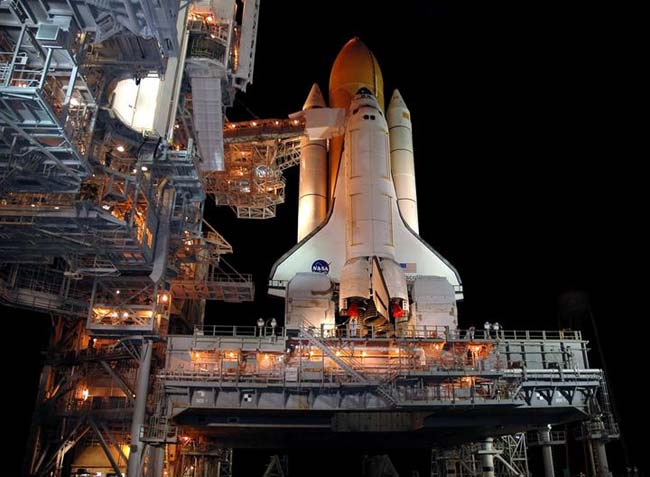NASA Begins Second Test of Discovery's External Tank

CAPE CANAVERAL, Fla. - NASAis fueling Discovery's external tank this morning in a bid to troubleshootproblems with critical engine sensors and valves.
NASA managers gave the go-ahead to start fueling Discovery around 5:30 a.m.EDT. Supercold propellants are slowly pumping into the 15-story tank.
It will take the launch team at Kennedy Space Center about three hours to fillthe tank with more than a half million gallons of liquid oxygen and liquidhydrogen.
The shuttle team will take advantage of the fueling test to get another look athow and where ice forms on the tank in addition to how the redesigned foaminsulation performs in general.
However, the primary reason for doing a second tanking test is to figure out aproblem that cropped up during a similar test in April.
During that test, sensors that serve as fuel gauges and a pressure-relief valvefailed to operate properly. The sensors produced an intermittent stream ofdata, and the valve opened and shut more than expected.
NASA engineers want to pinpoint the causes of the problems and take anycorrective action before launching the agency's first post-Columbia shuttlemission, which now is scheduled to lift off between July 13 and July 31.
Get the Space.com Newsletter
Breaking space news, the latest updates on rocket launches, skywatching events and more!
The fuel-depletion sensors constantly measure the amount of propellant left inthe 15-story tank as the shuttle makes its nine-minute climb into orbit.
The relief valve is designed to keep pressures within the tank at proper levelsduring fuel-loading operations and flight.
NASA plans to move Discovery from launch pad 39B to the KSC Vehicle AssemblyBuilding as early as Tuesday so the ship can be outfitted with a new externaltank equipped with a fuel pipeline heater.
Managers decided to make that move after dangerous amounts of ice built uparound a 70-foot propellant line on the outside of Discovery's tank during lastmonth's fuel-loading test.
NASA feared ice could break off during launch and damage the shuttle's fragilethermal tiles and wing panels.
Serious damage to a wing panel doomed Columbia and its seven astronauts as theytried to return to the Earth in February 2003.
Publishedunder license from FLORIDA TODAY. Copyright ? 2005 FLORIDA TODAY. No portion ofthis material may be reproduced in any way without the written consent of FLORIDA TODAY.
Fixing NASA: Complete Coverage ofSpace Shuttle Return to Flight
Join our Space Forums to keep talking space on the latest missions, night sky and more! And if you have a news tip, correction or comment, let us know at: community@space.com.
Todd Halvoron is a veteran aerospace journalist based in Titusville, Florida who covered NASA and the U.S. space program for 27 years with Florida Today. His coverage for Florida Today also appeared in USA Today, Space.com and 80 other newspapers across the United States. Todd earned a bachelor's degree in English literature, journalism and fiction from the University of Cincinnati and also served as Florida Today's Kennedy Space Center Bureau Chief during his tenure at Florida Today. Halvorson has been an independent aerospace journalist since 2013.









